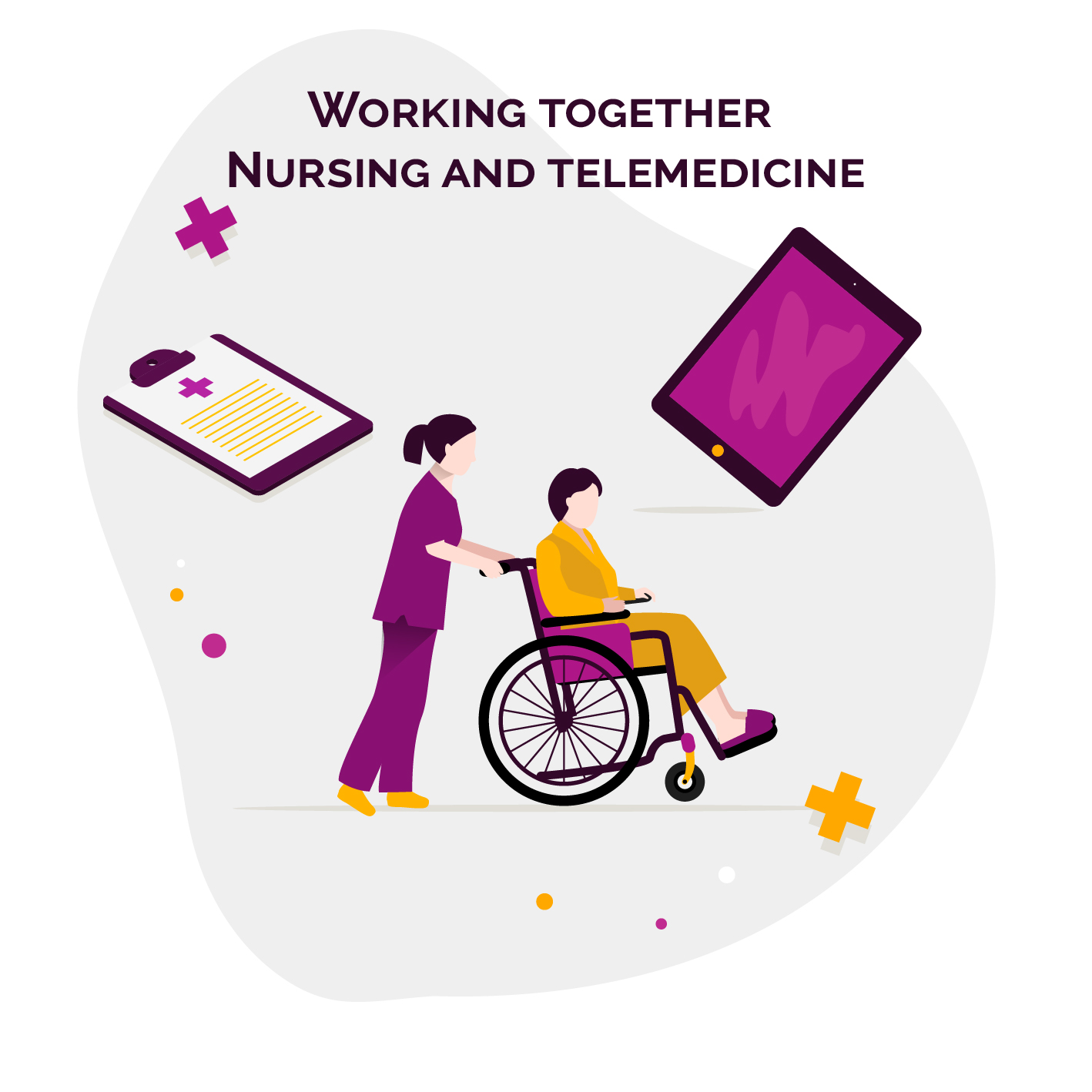
Working together – Nursing and telemedicine
As healthcare advances, nurses continue to expand in their roles. Nurses are known for being flexible and innovative, and telemedicine offers exciting opportunities and benefits for patients while also enabling nurses to be on the forefront of providing quality care. A telehealth nurse is called upon to provide a wide range of distance care services in environments and situations such as, ambulatory care, hospitals, patient residences, emergencies, and public health units.
In Canada, nursing care and services have been delivered and coordinated remotely through ICT for over 10 years. For example, wound care teleassistance established in 2008, is an operational service made by and for the nurses in wound care in Canada. Wound care teleassistance is an audio-visual communication system that has the capacity for asynchronous or synchronous electronic voice and image transfer1. Remotely a nurse records a patient’s wound with a mobile video, and at the same time, in another facility, an expert nurse observes the wound on their computer screen and can provide any required changes to treatment and management. As of 2014, wound care teleassistance is offered to patients across 65 healthcare centres in remote or rural areas of Canada lacking nurse expertise in wound care1.
However, telenursing is not unique to just Canada, Australia has a long history of providing medical care from a distance to the rural population, through the placement of remote nurses 2 and now, this type of care will be introduced in France with “télésoins”. Legislation for this has been recently discussed and will be implemented from January 1st, 2020 by remunerating nurses 10 or 15 euros to organise and assist a teleconsultation from the patient side.
Nurses play a key role in the success of telemedicine by interacting with the physician while caring for a patient in the community. Recently, an example of this was, the use of linked image- and sound transmission of suspected stroke diagnosis from an ambulance vehicle operated by professional emergency nurses (PEN) while traveling to a hospital3. In summary, while on route, images and sounds are sent from the ambulance to a neurologist who provides stroke treatment support to the PENs, aiding in earlier and more efficient diagnosis and treatment3. In this study, however, PENs expressed ambiguity about the efficiency of the entire concept, with both operational interference and the necessity of the physician’s competencies noted as important factors for further development of this use in emergency medicine.
References
1. Gagnon, M.P. et al., 2014. The influence of a wound care teleassistance service on nursing practice: a case study in Quebec. Telemed J E Health, 20(6):593–600, doi:10.1089/tmj.2013.0287
2. Australian Government Department of Health and Ageing, Nursing and Midwifery Telehealth Consortia Telehealth Standards: Registered Nurses. http://anmf.org.au/pages/telehealth, accessed in May 2019.
3. Johansson, A. et al., 2019. Technical feasibility and ambulance nurses’ view of a digital telemedicine system in pre-hospital stroke care – A pilot study. International emergency nursing, https://doi.org/10.1016/j.ienj.2019.03.008

